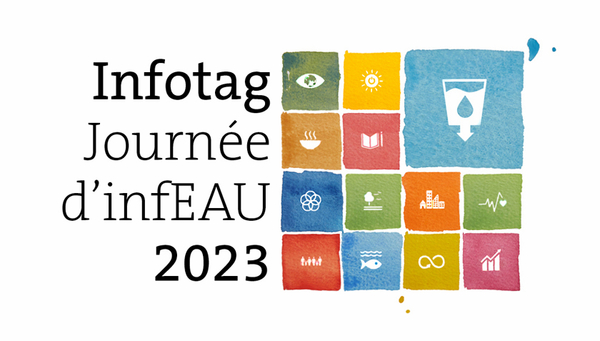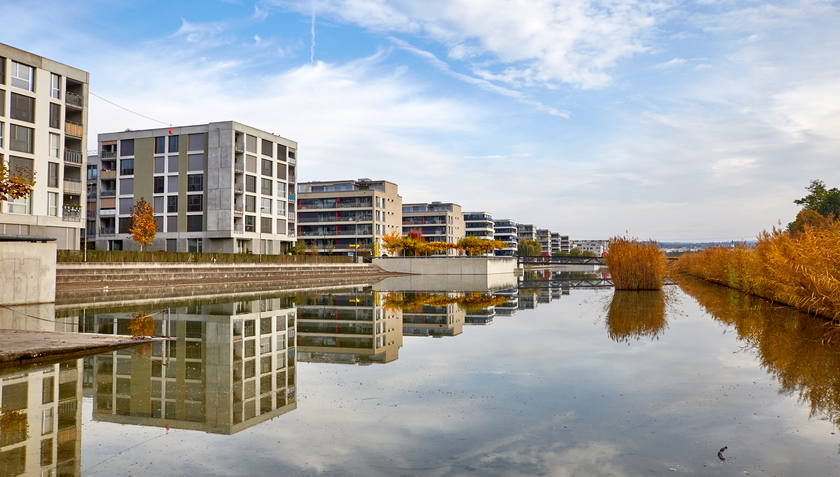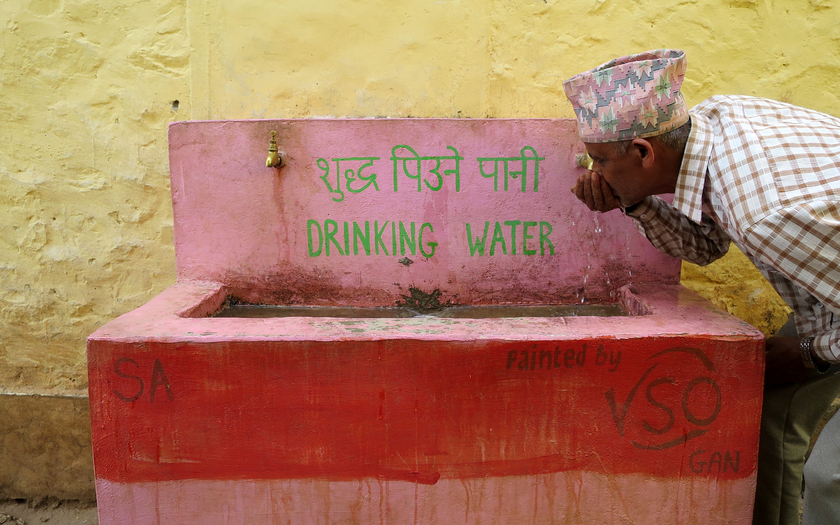Archive detail
Sustainable Development Goals also apply to Switzerland
September 14, 2023 |
The 2030 Agenda for Sustainable Development (adopted by the UN in 2015) also applies to Switzerland. 2023 is the midway point on the road to the 17 goals set out in it. Among them are several concerning water as food and habitat. Today, Thursday, 14 September at the Dübendorf site, the Aquatic Research Institute Eawag therefore informed around 150 experts from consulting, administration, politics and research where work still needs to be done in these areas to achieve the 2030 objectives.
"Peace is a very important prerequisite for sustainable development."
Daniel Dubas, Federal Council Delegate for the 2030 Agenda
Switzerland as a developing country
Daniel Dubas, Federal Council Delegate for the 2030 Agenda, began the symposium by explaining why the earlier focus on "developing countries" is now outdated. With its high consumption, high energy and resource use and correspondingly very large CO2 and water footprints, Switzerland could also be described as a "developing country". The extent of biodiversity loss in Switzerland, for example, is alarming. According to Dubas, conflicting goals must be overcome, for example the use of pesticides and fertilisers in agriculture versus environmental protection. He called for a strengthening of the dialogue between the actors from research, politics, administration, economy and society. "The path is correct, but not yet the speed", the expert summed up regarding the course towards the target year of 2030. He cited the Ukraine war as a considerable obstacle: peace, as Dubas stated, is a prerequisite for sustainable development.
Reducing dirty water overflow into water bodies
Environmental Engineer Lauren Cook of Eawag presented initial results from investigations on blue-green infrastructure, i.e. tree planting, new meadowlands, ponds and other measures that can cool cities or retain rainwater. Blue-green infrastructure thus reduces overflows of dirty water, for example. When intense rain falls on sealed surfaces, the sewage system is unable to drain off all the water. Untreated wastewater and rainwater overflow into streams and rivers. Using the example of the Zurich municipality of Fehraltorf, Cook pointed out that covering 30 percent of residential and industrial areas with blue-green infrastructure could achieve an 80 percent reduction in these overflows. "At the same time, this makes the cities more liveable and the measures also benefit biodiversity. This is in line with Sustainable Development Goal 11", says researcher Cook.
Predicting nitrate hotspots after arsenic
In numerous countries around the world, such as Pakistan, China, Argentina and Mexico, the groundwater is regionally polluted with toxic arsenic due to geology. A group of researchers led by geochemist Michael Berg and environmental engineer Joel Podgorski from Eawag have used complex computer models to create maps of exactly where these risk zones are located. It rises from the fact that in many places groundwater is pumped and consumed without being tested for this pollutant. The experts estimate that more than 200 million people worldwide drink arsenic-contaminated water, thus endangering their health. The researchers have therefore combined their models with population density figures. This allows them to show where measures are most urgently needed. The hazard maps, supported by the Swiss Agency for Development and Collaboration, are freely available at www.gapmaps.org.
Scientists are currently using their experience in locating risk areas for groundwater contamination with existing data on climate, geology, soils and land use in Switzerland as well. However, the focus here is not on arsenic, but on the nutrient nitrate. "Thanks to around 500 measuring points, we have a pretty good idea of where nitrate levels in groundwater are too high", says Podgorski, "but there are blind spots in between." Predicting nitrate hotspots should now help to optimise monitoring networks and to seek more dialogue with agriculturalsists in high-risk regions. "If the nitrate prediction proves successful in the Swiss Plateau, countries where groundwater monitoring is only just being established could also benefit from our research", says Podgorski.
Detecting faecal germs with a do-it-yourself box
"Clean water and sanitation facilities for all" is Sustainable Development Goal 6. Too many people still depend on unsafe drinking water. For example, faecal germs such as coli bacteria lead to diarrhoeal diseases and affect quality of life and educational opportunities, especially in remote areas. Laboratory facilities to test water quality are lacking. Researchers from Eawag's Department of Sanitation, Water and Solid Waste for Development are therefore developing solutions that are suitable for everyday use and can be built and operated locally. Drinking water expert Sara Marks presented a do-it-yourself climate box at the Info Day. It allows water samples to be stored and the growth of microorganisms to be monitored under controlled conditions.
Cover picture: The theme of "water" runs like a common (blue) thread through the various SDGs, which also guide Eawag’s research (Watercolour: Eawag Communication / Philipp Ringli)



